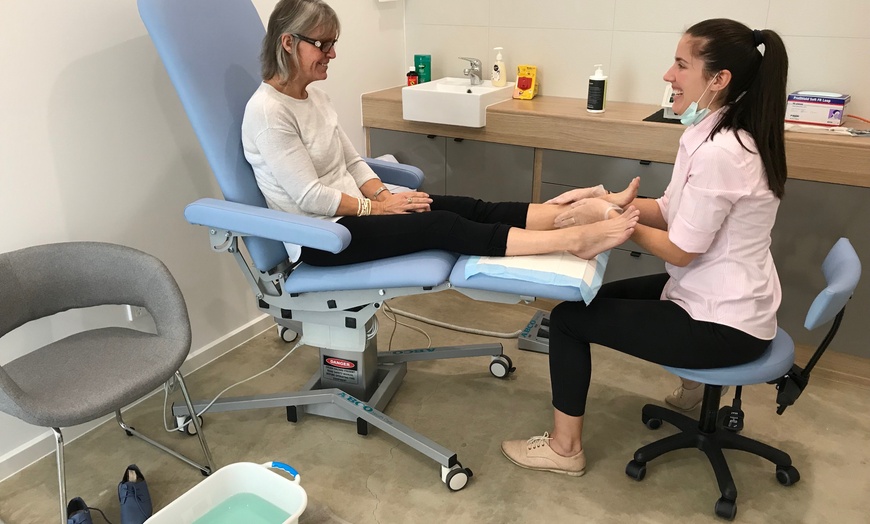
Corns and calluses are common foot conditions that many people experience, often as a result of friction or pressure on the skin. While they might seem like minor inconveniences, these conditions can lead to discomfort and even affect your overall foot health. In this guide, we’ll explore what corns and calluses are, their causes, how to effectively treat them, and practical steps to prevent them from recurring.
Corns are small, thickened areas of skin that typically form on the toes. They often have a hard, central core surrounded by inflamed skin. Corns are usually painful when pressed and are caused by repeated friction or pressure, often from ill-fitting shoes.
Calluses are larger, more diffuse areas of thickened skin that generally develop on the soles of the feet, particularly under the heels or balls of the feet. Unlike corns, calluses tend to be less painful and form as a protective response to repetitive friction and pressure.
Understanding the causes of corns and calluses can help you prevent them from developing:
Shoes that are too tight, too loose, or have high heels can create excessive pressure on specific areas of your feet, leading to corns and calluses. Poorly fitting shoes can cause friction that thickens the skin as a protective measure.
Abnormal foot structures, such as bunions or hammertoes, can cause uneven pressure distribution. This can lead to corns and calluses forming in areas where the skin is subjected to increased stress. An abnormal walking pattern can also contribute to these conditions.
Prolonged standing, walking, or high-impact activities can exacerbate pressure on your feet, leading to the development of corns and calluses. Consistent friction from repetitive movements is a common cause.
Neglecting proper foot care, such as not moisturising or failing to remove dead skin, can result in thickened skin areas becoming more pronounced.
If you’re dealing with corns or calluses, several effective treatments can help:
Non-medicated corn and callus pads can provide immediate relief by reducing friction and pressure on the affected areas. These pads help to alleviate pain and prevent further skin thickening.
Soak your feet in warm water for 10-15 minutes to soften the thickened skin. After soaking, use a pumice stone or foot file to gently exfoliate the area. This helps remove dead skin and reduces the size of corns and calluses.
Apply a moisturising cream designed for feet to keep the skin soft and supple. Look for products containing ingredients like urea or salicylic acid, which are effective in treating rough and thickened skin.
For persistent or severe corns and calluses, consult a podiatrist. Professional treatments may include:
If you have diabetes or other conditions that affect your foot health, avoid self-treatment. Professional care is essential to prevent complications, such as infections.
Preventing corns and calluses involves addressing the factors that contribute to their formation:
Choose shoes that fit well and provide adequate cushioning and support. Avoid high heels and shoes that are too tight or too loose. Proper footwear helps prevent pressure and friction on your feet.
If you are prone to developing corns and calluses, consider using protective pads or insoles in areas that experience high friction. These can reduce pressure and prevent skin thickening.
Keep your feet moisturised to prevent the buildup of dry, rough skin. Applying a thick foot cream daily can help maintain healthy skin and prevent the formation of corns and calluses.
If you notice foot deformities or abnormalities, such as bunions or hammertoes, seek treatment early. Correcting these issues can prevent abnormal pressure on your feet that leads to corns and calluses.
Incorporate regular foot care practices, such as gentle exfoliation and moisturising. Keeping your feet healthy helps reduce the risk of developing corns and calluses.
If home treatments are not effective or if you experience severe pain, it’s time to consult a podiatrist. Persistent corns and calluses can indicate underlying foot issues that require professional attention. Additionally, if you have diabetes or circulation problems, seeking professional care is crucial to avoid complications.
At The Podiatry Place, our experienced podiatrists specialise in treating corns and calluses. We offer comprehensive care, from professional debridement to custom orthotics and footwear advice. Our goal is to relieve your discomfort and help you maintain healthy feet.
Don’t let corns and calluses impact your quality of life. Contact us to schedule an appointment and discover effective treatments tailored to your needs.